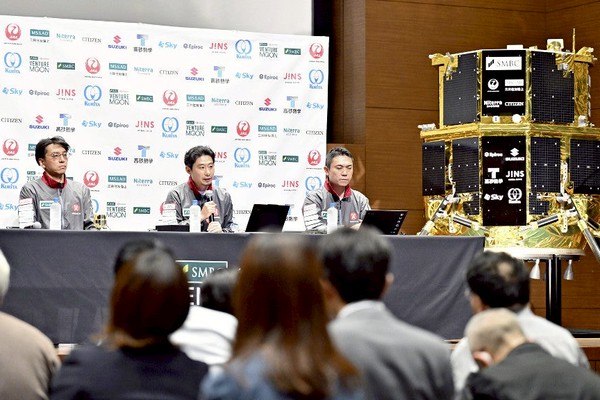
Japanese Company Declares Lunar Mission a Failure Following Crash Landing

 :
| Updated On: 06-Jun-2025 @ 12:57 pm
:
| Updated On: 06-Jun-2025 @ 12:57 pmSHARE
A Japanese private aerospace company, ispace, experienced its second failed attempt to softly land on the lunar surface when its lunar lander, Resilience, crashed during its descent. The company, based in Tokyo, announced the failure after losing contact with the lander moments before its scheduled touchdown on the moon. Resilience had successfully dropped out of lunar orbit and appeared to be performing well during its hour-long descent, but the connection was lost just before the final landing phase. Attempts by ground controllers to reestablish communication were unsuccessful, leading to the official declaration of mission failure after several hours of silence. The company’s livestream of the landing attempt abruptly ended.
The CEO and founder of ispace, Takeshi Hakamada, acknowledged the seriousness of the failure and apologized to all contributors and supporters. This second failure follows an earlier unsuccessful attempt in December 2022, when the company’s first lunar lander, part of the Hakuto-R Mission 1, also crashed. That mission reached lunar orbit but crashed during its final descent due to a sensor error that caused the lander to misjudge its altitude. Resilience, launched in January from Florida, shared its ride aboard a SpaceX rocket with Firefly Aerospace’s Blue Ghost, which successfully soft-landed on the moon in March, making Firefly the first private company to achieve such a feat.
Resilience was designed to land on a flat region of the lunar surface in Mare Frigoris, also known as the Sea of Cold, chosen by ispace for its minimal boulder presence. The lander was 2.3 meters (7.5 feet) tall and was carrying several payloads, including a mini rover named Tenacious, which was built in Europe. Tenacious was expected to be deployed shortly after landing to explore the lunar terrain, capture high-definition images, and collect lunar soil samples for NASA. Additionally, Resilience carried a miniature red model house, designed by Swedish artist Mikael Genberg, symbolizing humanity’s future presence on the moon. This “Moonhouse” was intended as a symbolic representation of a moon habitat, aligned with Hakamada’s vision of human habitation and work on the lunar surface by the 2040s.
Despite these ambitions, the second failed landing has cast uncertainty over the company’s long-term vision. Ispace plans a larger lunar mission by 2027, in collaboration with NASA. However, the company faces financial constraints. Jumpei Nozaki, ispace’s chief financial officer, affirmed the company’s commitment to continuing its lunar exploration despite setbacks. Nonetheless, Jeremy Fix, chief engineer of ispace’s US subsidiary, has cautioned that the company’s funds are limited and cannot support repeated mission failures.
While ispace did not disclose the exact cost of this latest failed mission, company officials confirmed it was less expensive than their first attempt, which reportedly cost over $100 million. The financial and technical challenges highlight the risks and difficulties faced by private companies venturing into lunar exploration, particularly those competing with larger governmental agencies and other private enterprises.
Overall, the failure of Resilience to land softly on the moon underscores the complexities of space exploration. Despite the setbacks, ispace remains determined to pursue its goals, reflecting the growing role of private enterprises in advancing human presence beyond Earth.
Contact Us
House. No. : 163, Second Floor Haridev Rd, near Puberun Path, Hatigaon,Guwahati, Assam 781038.
E-mail : assaminkcontact@gmail.com
Contact : +91 8811887662
Enquiry
×
Reporter Login
×